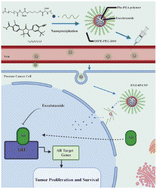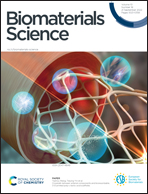Delivery of enzalutamide via nanoparticles for effectively inhibiting prostate cancer progression†
Abstract
Androgen deprivation therapy has been used as a standard clinical treatment for prostate cancer, but the disease generally progresses to castration-resistant prostate cancer in a very short time. Enzalutamide (ENZ) is an emerging second-generation androgen receptor (AR) antagonist used for the treatment of patients with nonmetastatic castration-resistant prostate cancer (CRPC). However, due to the rapid onset of drug resistance, it provides only a modest increase in survival. Here, we propose a convenient and effective androgen receptor antagonist drug delivery strategy, that is, the use of a biocompatible nanoparticle (NP) drug delivery system for drug delivery to improve its bioavailability and therapeutic performance. Although the particle size of the phenylpropyl polymer (8P4) nanoparticles is small, it has a high drug-carrying capacity. ENZ-8P4 NPs can increase drug delivery efficiency, enhance drug cytotoxicity, and reduce the half-inhibitory concentration (IC50) of the drug. In addition, in vivo experiments confirmed that ENZ-8P4 preferentially accumulates in the tumor and significantly inhibits tumor growth. Hence, the 8P4 drug delivery system loaded with enzalutamide has excellent potential for the treatment of prostate cancer.



 Please wait while we load your content...
Please wait while we load your content...